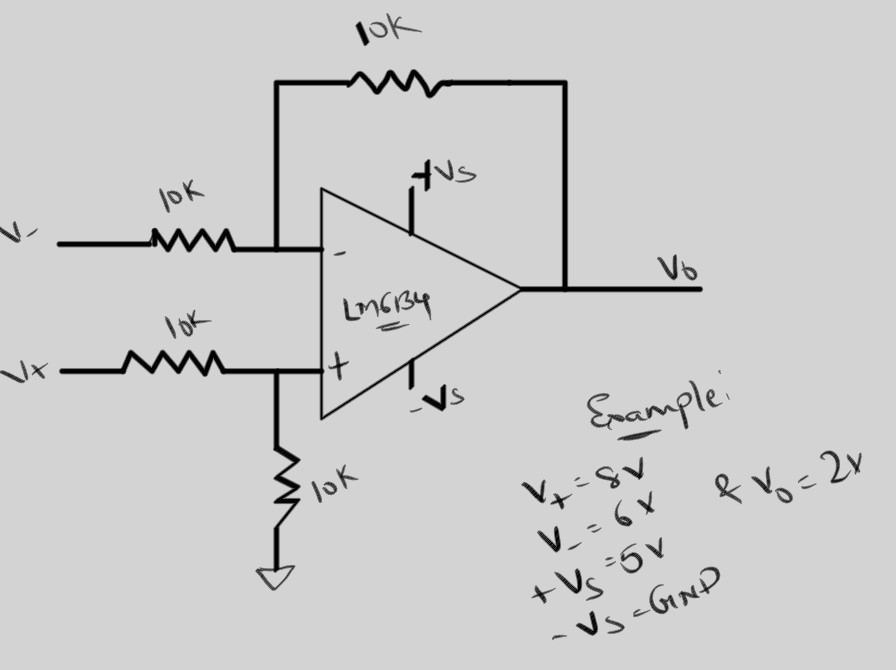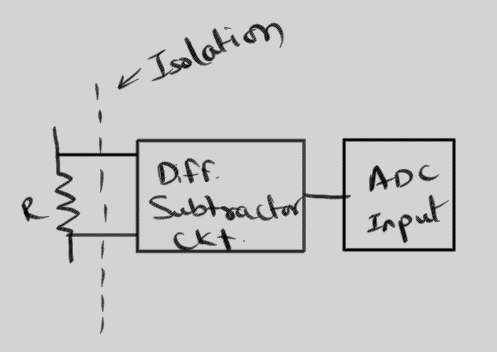Other Parts Discussed in Thread: LM6132, TM4C123GH6PM
Hello TI,
I am using LM6134 and LM6132 Op-amps in my design and as a part of improvement a circuit is to be designed where the voltage on the Op-amp's input pins is 5V-15V but available supply voltage is 5V only.
The datasheet shows below:
- Voltage at Input/Output Pin - (V+ )+0.3 and (V− )−0.3
- Supply Voltage (V+–V − ) - 35 V
I am aware of the fact that output voltage cannot be more than supply voltage (Vs) for the Op-amp circuit and the application is such.
Basically, I am designing a subtractor circuit where the output voltage swings between 0 to 3 V DC and input voltage on each pin swings between 5-15V DC.
Hence the question is Can I use the same Op-Amps without any issues or shall look for some alternate.
A rough circuit is attached for reference.
Thank you.





